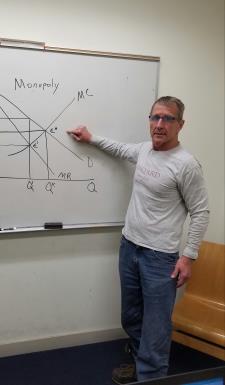
Lenny D. answered • 07/13/19
Financial Professional with many years of Wall Street Experience
I don't know where this term "force of interest comes from".
If the bond is priced at Par then
1000 = Present value of Coupons plus principal. Let d= discount factor = (1/(1+ i)) where i= yield to maturity.
then 1000 = 50d +70d2 +90d3+1000d3.=P
We solve for d and, therefore, i iteratively. The coupon, on average is 7%. That is a good place to start. If i = .07 the d = .93458 and P =997.63. With a YTM of 7% the bond would trade at a discount to par as the cash flows are back-ended.
Price the bond again at 7.01%. In this case the bond price would fall to 997.37. so the bond price sensitivity to a 1 basis point change in yield is 997.37-997.63. or about .-.26.
we want the yield that values the cash flows at PAR (1,000).. We need the PV to rise by 2.37 points. we could take a better guess now. if a one basis point change gets us .26, 9 will get us about 2.34 (if the DV01 is constant which it is not). So lets try a yield of 6.91%
When i= 6.91 d= .93536 and the PV of the cash flows is 1000.025 . This is pretty close and we can keep repeating the process until we are as close to 1000 as we would like.
I hope this helps.
Let me know




